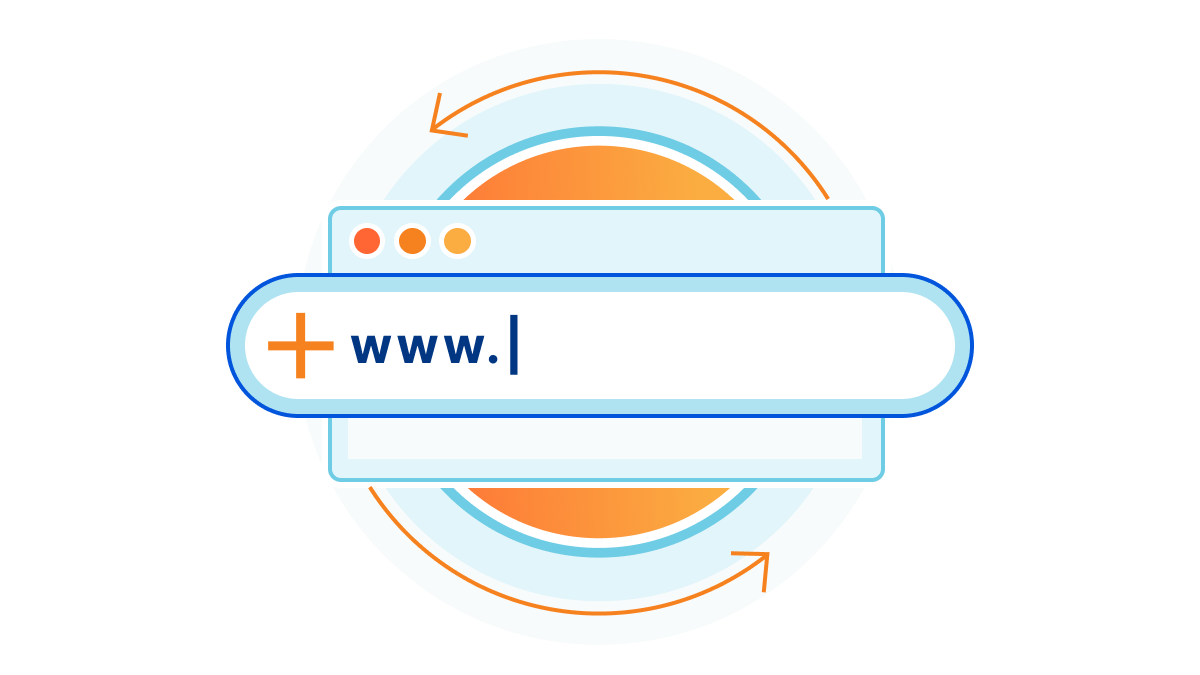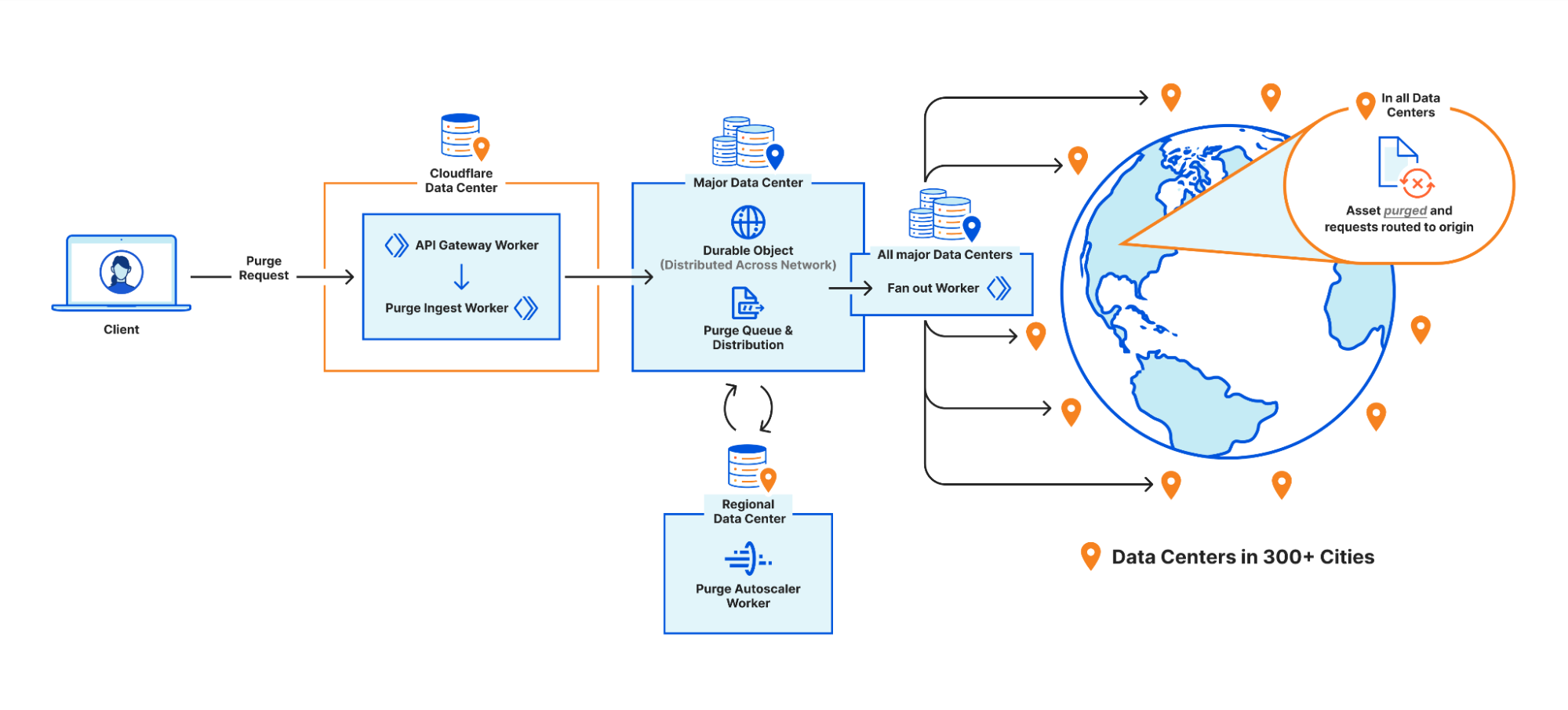Introducing the Cloudflare Radar Internet Quality Page


Internet connections are most often marketed and sold on the basis of "speed", with providers touting the number of megabits or gigabits per second that their various service tiers are supposed to provide. This marketing has largely been successful, as most subscribers believe that "more is better”. Furthermore, many national broadband plans in countries around the world include specific target connection speeds. However, even with a high speed connection, gamers may encounter sluggish performance, while video conference participants may experience frozen video or audio dropouts. Speeds alone don't tell the whole story when it comes to Internet connection quality.
Additional factors like latency, jitter, and packet loss can significantly impact end user experience, potentially leading to situations where higher speed connections actually deliver a worse user experience than lower speed connections. Connection performance and quality can also vary based on usage – measured average speed will differ from peak available capacity, and latency varies under loaded and idle conditions.
The new Cloudflare Radar Internet Quality page
A little more than three years ago, as residential Internet connections were strained because of the shift towards working and learning from home due to the COVID-19 pandemic, Cloudflare announced the speed.cloudflare.com Continue reading
A step-by-step guide to transferring domains to Cloudflare


Transferring your domains to a new registrar isn’t something you do every day, and getting any step of the process wrong could mean downtime and disruption. That’s why this Speed Week we’ve prepared a domain transfer checklist. We want to empower anyone to quickly transfer their domains to Cloudflare Registrar, without worrying about missing any steps along the way or being left with any unanswered questions.
Domain Transfer Checklist
Confirm eligibility
- Confirm you want to use Cloudflare’s nameservers: We built our registrar specifically for customers who want to use other Cloudflare products. This means domains registered with Cloudflare can only use our nameservers. If your domain requires non-Cloudflare nameservers then we’re not the right registrar for you.
- Confirm Cloudflare supports your domain’s TLD: You can view the full list of TLDs we currently support here. Note: We plan to support .dev and .app by mid-July 2023.
- Confirm your domain is not a premium domain or internationalized domain name (IDNs): Cloudflare currently does not support premium domains or internationalized domain names (Unicode).
- Confirm your domain hasn’t been registered or transferred in the past 60 days: ICANN rules prohibit a domain from being transferred if it has been registered or previously transferred Continue reading
Speeding up your (WordPress) website is a few clicks away


Every day, website visitors spend far too much time waiting for websites to load in their browsers. This waiting is partially due to browsers not knowing which resources are critically important so they can prioritize them ahead of less-critical resources. In this blog we will outline how millions of websites across the Internet can improve their performance by specifying which critical content loads first with Cloudflare Workers and what Cloudflare will do to make this easier by default in the future.
Popular Content Management Systems (CMS) like WordPress have made attempts to influence website resource priority, for example through techniques like lazy loading images. When done correctly, the results are magical. Performance is optimized between the CMS and browser without needing to implement any changes or coding new prioritization strategies. However, we’ve seen that these default priorities have opportunities to improve greatly.
In this co-authored blog with Google’s Patrick Meenan we will explain where the opportunities exist to improve website performance, how to check if a specific site can improve performance, and provide a small JavaScript snippet which can be used with Cloudflare Workers to do this optimization for you.
What happens when a browser receives the response?
Before we Continue reading
Descale your network with Cloudflare’s enhanced Descaler Program


Speed matters, especially when it comes to exiting a slower service and transitioning to a new one. Back in March, 2023, we announced the Descaler Program, a frictionless path to migrate existing Zscaler customers to Cloudflare One. This program makes it easy for customers to make the switch to a faster, simpler, and more agile foundation for security and network transformation with Cloudflare.
Through repeated engagements with customers of all sizes, we've improved the Descaler tooling to allow Zscaler to Cloudflare configuration migrations to be completed in hours, not days. This accelerated transition has helped organizations meet migration deadlines and eliminate countless hours of manual migration effort without skipping a beat. Today we’re excited to share more stories from customers and the amount of time it took them to ‘descale’.
Cloudflare One and the Descaler Program
As a quick recap, Cloudflare One is our Secure Access Service Edge (SASE) platform that combines network connectivity services with Zero Trust security services on one of the fastest, most resilient and most composable global networks. The platform dynamically connects users to enterprise resources, with identity-based security controls delivered close to users, wherever they are.
At its core, the Descaler Program helps Continue reading
Understanding end user-connectivity and performance with Digital Experience Monitoring, now available in beta

This post is also available in Français.

Organizations that replace their corporate network and security appliances with a cloud-based solution trust that provider with how their employees work each and every day. Cloudflare One, our comprehensive Secure Access Service Edge (SASE) offering, helps more than 10,000 organizations deploy a remote access and Internet security solution that is faster than industry competitors. Starting today, administrators can measure that experience on their own and hold us accountable to that standard.
Cloudflare’s Digital Experience Monitoring (DEX) product gives teams of any size the same toolkit that we use to measure our own global network that powers nearly one-fourth of the Internet each day. Customers of Cloudflare One can now measure the experience that their team members have connecting to the Internet - whether they need that data for troubleshooting, evaluating carrier and ISP performance, or just understanding how their employees work.
We are excited to share today that DEX is now in open beta for all Cloudflare One customers. Administrators can begin running tests and evaluating network performance with any device enrolled using the Cloudflare One agent. Today’s announcement opens up these tools to every customer, but we are just getting started - Continue reading
Network performance update: Speed Week 2023


We constantly measure our own and other networks' performance, and look for ways to improve our performance; and share our results.
In this post we are going to share the most recent updates, and tell you about our tools and processes that we use to monitor and improve our network performance.
First, the results
In July, 2022, we started taking a more granular look down to every single network and taking actions for the specific networks where we have some room for improvement. Cloudflare was already the fastest provider for most of the networks around the world (we define a network as country and AS number pair). Taking a closer look at the numbers, Cloudflare was ranked #1 in 33% of the networks and was within 2 ms or 5% of the #1 provider for 8% of the networks that we measured in terms of the 95th percentile TCP Connection Time. For reference, our closest competitor on that front was the fastest for 20% of networks.
As of May 31, 2023 those numbers have improved significantly. Today, Cloudflare is the fastest provider for 46% of networks—and was within 2 ms (95th percentile TCP Connection Time) or 5% of the fastest Continue reading
Benchmarking dashboard performance


In preparation of Cloudflare Speed Week 2023, we spent the last few weeks benchmarking the performance of a Cloudflare product that has gone through many transformations throughout the years: the Cloudflare dashboard itself!
Limitations and scope
Optimizing for user-experience is vital to the long-term success of both Cloudflare and our customers. Reliability and availability of the dashboard are also important, since millions of customers depend on our services every day. To avoid any potential service interruptions while we made changes to the application’s architecture, we decided to gradually roll out the improvements, starting with the login page.
As a global company, we strive to deliver the best experience to all of our customers around the world. While we were aware that performance was regional, with regions furthest from our core data centers experiencing up to 10 times longer loading speeds, we wanted to focus on improvements that would benefit all of our users, no matter where they geographically connect to the Dashboard.
Finally, throughout this exercise, it was important to keep in mind that our overall goal was to improve the user experience of the dashboard, with regards to loading performance. We chose to use a Lighthouse Performance score as Continue reading
How we think about Zero Trust Performance


Cloudflare has done several deep dives into Zero Trust performance in 2023 alone: one in January, one in March, and one for Speed Week. In each of them, we outline a series of tests we perform and then show that we’re the fastest. While some may think that this is a marketing stunt, it’s not: the tests we devised aren’t necessarily built to make us look the best, our network makes us look the best when we run the tests.
We’ve discussed why performance matters in our blogs before, but the short version is that poor performance is a threat vector: the last thing we want is for your users to turn off Zero Trust to get an experience that is usable for them. Our goal is to improve performance because it helps improve the security of your users, the security of the things that matter most to you, and enables your users to be more productive.
When we run Zero Trust performance tests, we start by measuring end-to-end latency from when a user sends a packet to when the Zero Trust proxy receives, forwards, and inspects the packet, to when the destination website processes the packet and Continue reading
Globally distributed AI and a Constellation update


During Cloudflare's 2023 Developer Week, we announced Constellation, a set of APIs that allow everyone to run fast, low-latency inference tasks using pre-trained machine learning/AI models, directly on Cloudflare’s network.
Constellation update
We now have a few thousand accounts onboarded in the Constellation private beta and have been listening to our customer's feedback to evolve and improve the platform. Today, one month after the announcement, we are upgrading Constellation with three new features:
Bigger models
We are increasing the size limit of your models from 10 MB to 50 MB. While still somewhat conservative during the private beta, this new limit opens doors to more pre-trained and optimized models you can use with Constellation.
Tensor caching
When you run a Constellation inference task, you pass multiple tensor objects as inputs, sometimes creating big data payloads. These inputs travel through the wire protocol back and forth when you repeat the same task, even when the input changes from multiple runs are minimal, creating unnecessary network and data parsing overhead.
The client API now supports caching input tensors resulting in even better network latency and faster inference times.
XGBoost runtime
Constellation started with the ONNX runtime, but our vision is to Continue reading
Donning a MASQUE: building a new protocol into Cloudflare WARP


When we originally announced WARP, we knew we were launching a product that was different from other VPNs. Cloudflare has not only hundreds more data centers than your typical VPN provider, but also a unique purview into the adoption of open Internet standards. The confluence of these two factors have led us to today’s announcement: support for MASQUE, a cutting-edge new protocol for the beta version of our consumer WARP iOS app.
MASQUE is a set of mechanisms that extend HTTP/3 and leverage the unique properties of the QUIC transport protocol to efficiently proxy IP and UDP traffic. Most importantly, it will make your Internet browsing experience faster and more stable without sacrificing privacy.
Like many products at Cloudflare, we’re offering this first as a free, consumer offering. Once we’ve had an opportunity to learn from what it’s like to operate MASQUE on mobile devices, at scale, we plan to integrate it into our Zero Trust enterprise product suite.
We’re not saying goodbye to Wireguard
When we first built WARP we chose to go with Wireguard for many reasons – among them, simplicity. This is where Wireguard shines: ~4,000 lines of code that use public-key cryptography to create an encrypted Continue reading
Cloudflare Snippets is now available in alpha

Today we are excited to announce that Cloudflare Snippets is available in alpha. In the coming weeks we will be opening access to our waiting list.

What are Snippets?
Over the past two years we have released a number of new rules products such as Transform Rules, Cache Rules, Origin Rules, Config Rules and Redirect Rules. These new products give more control to customers on how we process their traffic as it flows through our global network. The feedback on these products so far has been overwhelmingly positive. However, our customers still occasionally need the ability to do more than the out-of-the-box functionality allows. Not just adding an HTTP header - but performing some advanced calculation to create the output.
For these cases, Cloudflare Snippets comes to the rescue. Snippets are small pieces of user created JavaScript that are run by Cloudflare before your website, API or application is served to the user. If you're familiar with Cloudflare Workers, our robust developer platform, then you'll find Snippets to be a familiar addition. For those who are not, Snippets are designed to be easily created, tested, and deployed. Providing you with the ability to deploy your custom JavaScript Snippet to Continue reading
Part 2: Rethinking cache purge with a new architecture


In Part 1: Rethinking Cache Purge, Fast and Scalable Global Cache Invalidation, we outlined the importance of cache invalidation and the difficulties of purging caches, how our existing purge system was designed and performed, and we gave a high level overview of what we wanted our new Cache Purge system to look like.
It’s been a while since we published the first blog post and it’s time for an update on what we’ve been working on. In this post we’ll be talking about some of the architecture improvements we’ve made so far and what we’re working on now.
Cache Purge end to end
We touched on the high level design of what we called the “coreless” purge system in part 1, but let’s dive deeper into what that design encompasses by following a purge request from end to end:

Step 1: Request received locally
An API request to Cloudflare is routed to the nearest Cloudflare data center and passed to an API Gateway worker. This worker looks at the request URL to see which service it should be sent to and forwards the request to the appropriate upstream backend. Most endpoints of the Cloudflare API are currently handled by Continue reading
Spotlight on Zero Trust: We’re fastest and here’s the proof


In January and in March we posted blogs outlining how Cloudflare performed against others in Zero Trust. The conclusion in both cases was that Cloudflare was faster than Zscaler and Netskope in a variety of Zero Trust scenarios. For Speed Week, we’re bringing back these tests and upping the ante: we’re testing more providers against more public Internet endpoints in more regions than we have in the past.
For these tests, we tested three Zero Trust scenarios: Secure Web Gateway (SWG), Zero Trust Network Access (ZTNA), and Remote Browser Isolation (RBI). We tested against three competitors: Zscaler, Netskope, and Palo Alto Networks. We tested these scenarios from 12 regions around the world, up from the four we’d previously tested with. The results are that Cloudflare is the fastest Secure Web Gateway in 42% of testing scenarios, the most of any provider. Cloudflare is 46% faster than Zscaler, 56% faster than Netskope, and 10% faster than Palo Alto for ZTNA, and 64% faster than Zscaler for RBI scenarios.
In this blog, we’ll provide a refresher on why performance matters, do a deep dive on how we’re faster for each scenario, and we’ll talk about how we measured performance for each product.
Continue reading
It’s never been easier to migrate thanks to Cloudflare’s new Migration Hub


We understand the pain points associated with CDN migrations. That's why in late 2021 we introduced Turpentine, a project to the process of translating the old Varnish Configuration Language (VCL) into Cloudflare Workers with just a push of a button. After nearly two years of testing and user feedback, we’ve tailored the migration processes for different user groups.
Today, we are thrilled to relaunch Turpentine, and introduce Cloudflare's new Migration Hub. The Migration Hub serves as a one-stop-shop for all migration needs, featuring brand-new migration guides that bring transparency and simplicity to the process.
We also know that a large number of customers aren't comfortable doing migrations themselves. Years of built up business logic makes unpacking and translating CDN configurations between different vendors difficult and locks businesses into subpar products and services. To help these customers we have established a Professional Services group to ensure smooth migrations for customers transitioning to Cloudflare’s first-class products. Going forward, we plan to continue to invest resources in Turpentine to ensure that moving to any part of Cloudflare is easy and you have the help you need.
Why choose Cloudflare?
Cloudflare has gained immense popularity among businesses seeking to improve website performance, security, Continue reading
Workers KV is faster than ever with a new architecture


We’re excited to announce a significant performance improvement coming to Workers KV, focused on dramatically improving cold read performance and reducing latency, even for long tail access patterns.
Developers using KV have seen great performance on hot reads, but ask why their 95th percentile latency — often on a key (or set of keys) that hadn’t been accessed recently or in that region — was higher than expected. We took this feedback to heart: we’ve been working feverishly on a new caching layer for KV behind the scenes, which enables customers to achieve much more frequent hot reads, reduced worst case latency times, better flexibility and control over cache TTLs, and much faster consistency over our previous iterations, and it’s now live for all KV users.
The best part? Developers using KV don’t need to change anything to benefit from this increased performance.
What is Workers KV?
Workers KV is a key value store designed for read heavy use-cases and applications powered by Cloudflare’s network. KV’s focus on read-heavy use-cases allows it to serve hot (cached) reads in milliseconds, which makes it ideal for storing per-application or customer configuration data, routing configuration, multivariate (A/B testing) configurations, and even small asset Continue reading
How Kinsta used Workers and Workers KV to improve cache hit rates by 56%

This is a guest post by Kinsta about their use of our platform.

At Kinsta, we’re obsessed with speed: Our Application Hosting, Database Hosting and Managed WordPress Hosting services all run on the Google Cloud Platform’s fastest Premium Tier Network and C2 Machines, and we rely on Cloudflare to keep the pedal to the metal for tens of thousands of customers who want to deliver their content around the world with speed and security.
While making that happen, we’ve learned a thing or two about using Cloudflare Workers and Workers KV to provide optimized caching rules for static and dynamic content.
In early 2023, we doubled down on Cloudflare cache wrangling, making caches more responsive to client-side configuration changes while also shifting the heavy lifting behind broadcasting feature updates away from our admins on the backend and into Cloudflare Workers. A key result was a dramatic increase in the share of customer data successfully cached, increasing 56.3% between October 2022 and March 2023.

Cloudflare Workers and Workers KV allow us to programmatically customize every request and response with minimal effort and lower latency. We no longer need to deploy changes to hundreds of thousands of containers when we Continue reading
Are you measuring what matters? A fresh look at Time To First Byte


Today, we’re making the case for why Time To First Byte (TTFB) is not a good metric for evaluating how fast web pages load. There are better metrics out there that give a more accurate representation of how well a server or content delivery network performs for end users. In this blog, we’ll go over the ambiguity of measuring TTFB, touch on more meaningful metrics such as Core Web Vitals that should be used instead, and finish on scenarios where TTFB still makes sense to measure.
Many of our customers ask what the best way would be to evaluate how well a network like ours works. This is a good question! Measuring performance is difficult. It’s easy to simplify the question to “How close is Cloudflare to end users?” The predominant metric that’s been used to measure that is round trip time (RTT). This is the time it takes for one network packet to travel from an end user to Cloudflare and back. We measure this metric and mention it from time to time: Cloudflare has an average RTT of 50 milliseconds for 95% of the Internet-connected population.
Whilst RTT is a relatively good indicator of the quality of Continue reading
Introducing Timing Insights: new performance metrics via our GraphQL API

If you care about the performance of your website or APIs, it’s critical to understand why things are slow.
Today we're introducing new analytics tools to help you understand what is contributing to "Time to First Byte" (TTFB) of Cloudflare and your origin. TTFB is just a simple timer from when a client sends a request until it receives the first byte in response. Timing Insights breaks down TTFB from the perspective of our servers to help you understand what is slow, so that you can begin addressing it.
But wait – maybe you've heard that you should stop worrying about TTFB? Isn't Cloudflare moving away from TTFB as a metric? Read on to understand why there are still situations where TTFB matters.
Why you may need to care about TTFB
It's true that TTFB on its own can be a misleading metric. When measuring web applications, metrics like Web Vitals provide a more holistic view into user experience. That's why we offer Web Analytics and Lighthouse within Cloudflare Observatory.
But there are two reasons why you still may need to pay attention to TTFB:
1. Not all applications are websites
More than half of Cloudflare traffic is for APIs, Continue reading
Introducing HTTP/3 Prioritization


Today, Cloudflare is very excited to announce full support for HTTP/3 Extensible Priorities, a new standard that speeds the loading of webpages by up to 37%. Cloudflare worked closely with standards builders to help form the specification for HTTP/3 priorities and is excited to help push the web forward. HTTP/3 Extensible Priorities is available on all plans on Cloudflare. For paid users, there is an enhanced version available that improves performance even more.
Web pages are made up of many objects that must be downloaded before they can be processed and presented to the user. Not all objects have equal importance for web performance. The role of HTTP prioritization is to load the right bytes at the most opportune time, to achieve the best results. Prioritization is most important when there are multiple objects all competing for the same constrained resource. In HTTP/3, this resource is the QUIC connection. In most cases, bandwidth is the bottleneck from server to client. Picking what objects to dedicate bandwidth to, or share bandwidth amongst, is a critical foundation to web performance. When it goes askew, the other optimizations we build on top can suffer.
Today, we're announcing support for prioritization in HTTP/3, using Continue reading
How to use Cloudflare Observatory for performance experiments


Website performance is crucial to the success of online businesses. Study after study has shown that an increased load time directly affects sales. But how do you get test products that could improve your website speed without incurring an element of risk?
In today's digital landscape, it is easy to find code optimizations on the Internet including our own developers documentation to improve the performance of your website or web applications. However, implementing these changes without knowing the impact they’ll have can be daunting. It could also cause an outage, taking websites or applications offline entirely, leaving admins scrambling to remove the offending code and get the business back online.
Users need a way to see the impact of these improvements on their websites without impacting uptime. They want to understand “If I enabled this, what performance boost should I expect to get?”.
Today, we are excited to announce Performance Experiments in Cloudflare Observatory. Performance Experiments gives users a safe place to experiment and determine what the best setup is to improve their website performance before pushing it live for all visitors to benefit from. Cloudflare users will be able to simply enter the desired code, run our Continue reading